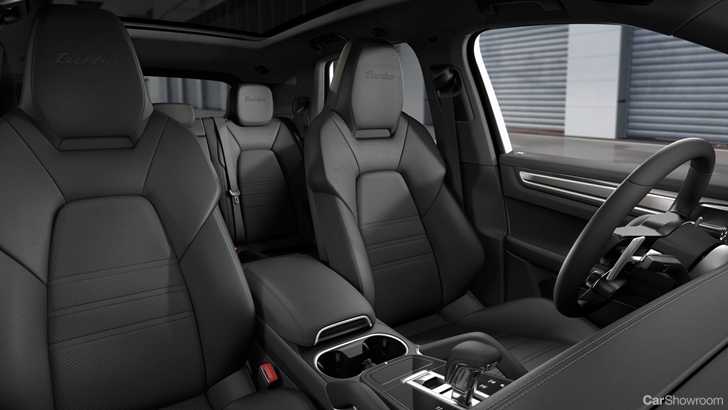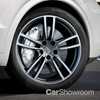Now that the all-new Cayenne is out of the bag, it was time for Porsche to shed more light on the different variants of their new flagship series sports SUV. And what better way to do that than to start, as they did with the Panamera launch last year, with the new daddy, the new Turbo.
Speaking of the Porsche’s saloon, it’s easy to equate this Cayenne to being just a jacked-up Panamera Turbo. And for a variety of reasons, it isn’t inaccurate. It does share the same powertrain: a 4.0-litre twin-turbocharged petrol V8 that puts out 404kW and a peak torque figure of 770Nm. It also integrates the turbochargers within the V cavity between two cylinder banks, shortening the paths between combustion chamber and turbine for far better responsiveness as well as a more compact footprint, which allows it to be placed further down, helping to lower the vehicle’s centre of gravity.
Compared to the previous Cayenne Turbo which used a 4.8-litre bi-turbo V8, the new engine (co-developed with Audi) delivers an improvement of 22kW and 20Nm while sipping less petrol (estimated 11.7-litres/100km on a combined cycle) and coughing up fewer carbon dioxide particles (estimated 267g/km). The new Turbo sprints to 100km/h in 4.1 seconds (or 3.9s when specified with the Sport Chromo Package) and will reach a top speed of 286km/h.
Otherwise, the new Turbo hides its extra performance over the other variants of this 3rd-generation Cayenne quite subtly. Aside from the ‘Turbo’ badge on the boot lid, you’d have to keep an eye out for those larger 21-inch alloys, variant-specific double-row front light modules and quad exhaust exits, and the new adaptive roof spoiler that functions in the same way as the retractable rear aero on the 911.
Depending on position and angle, it can serve to create additional downforce on the rear axle, improve high speed stability when deployed midway high, or can be locked in an airbrake position to shorten stopping distance. Speaking of which, the Cayenne Turbo comes with Porsche’s Surface Coated Brakes (PSDB) as standard, and have a layer of tungsten carbide applied to create more friction upon contact with the callipers as well as decreases the generation of brake dust for cleaner rims and makes the steel discs more resistant to wear.
Despite being the most performant Cayenne in the range (so far), it still comes with Porsche’s Active Chassis system with three-chamber air suspension to provide a more holistic mix of comfort and sportiness, which is also why the SUV also adopts mixed tyre dimensions: 285/40 at the front and wider 315/35 at the rear, using rubber usually reserved for sports cars.
The adaptive air suspension system is able to map different different sprint rates and offer the driver six selectable height levels for improved dynamics or additional ground clearance. The all-wheel drive comes optionally with Porsche’s Torque Vectoring Plus system for optimum grip at all times, even when taken off-road. Other goodies include optional rear-wheel steering and Dynamic Chassis Control that thankfully arrives as standard, work in tandem for on-the-fly roll stabilisation, improved low-to-medium speed agility, and high speed stability.
Like other Porsche models, the Cayenne Turbo’s connectivity and entertainment functions are operable now Porsche Advanced Cockpit, comprising of a high-resolution widescreen display that dominates the dashboard and working together with the near-fully digital instrument cluster. BOSE’s 710W Surround Sound System is fitted as standard, and 4 of the 5 heated seats feature integrated headrests and 18-way electric adjustment.
Both the previously announced Cayenne and Cayenne S, and now the Cayenne Turbo will be reaching European markets by the end of 2017, with the latter to start at 138,850 Euros. A more comprehensive list of regions and countries will receive the all-new Porsche sports SUV next year, including Australia. By then, don’t be surprised if Porsche pulls a few more variants out of the bag, such as the GTS and a couple of hybrids, including a range-topping Turbo S E-Hybrid.
For more on Porsche cars, check out our Showroom.



























